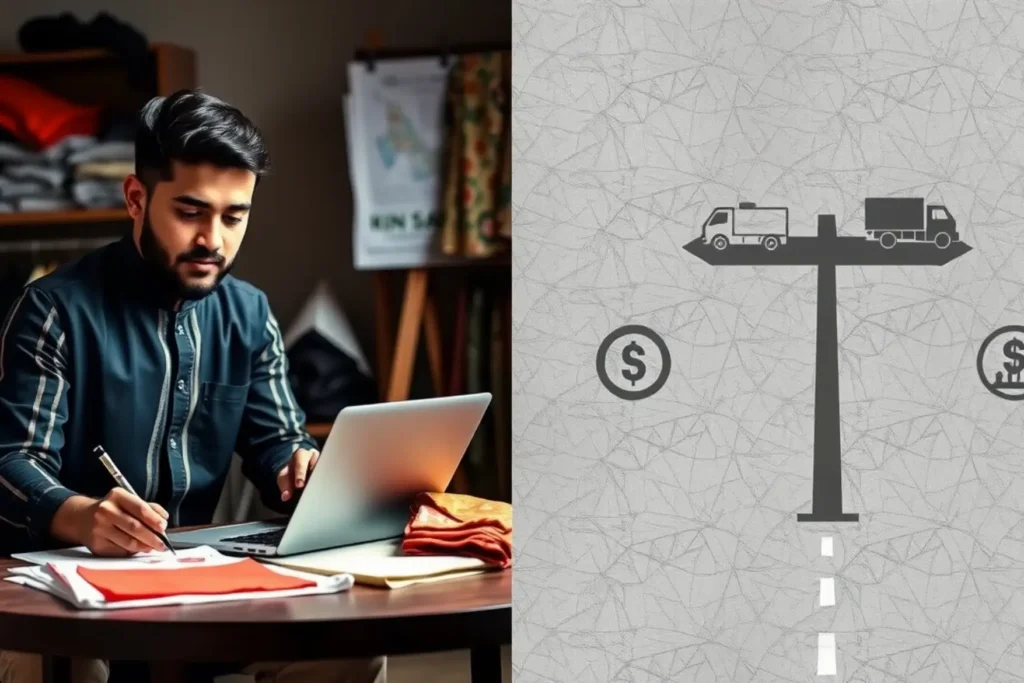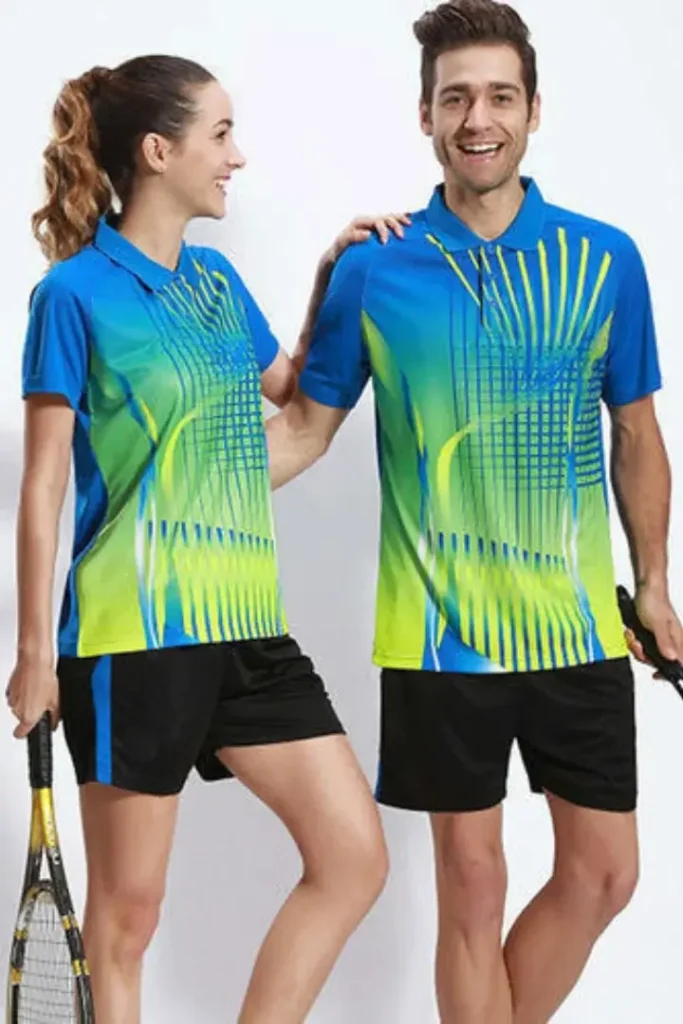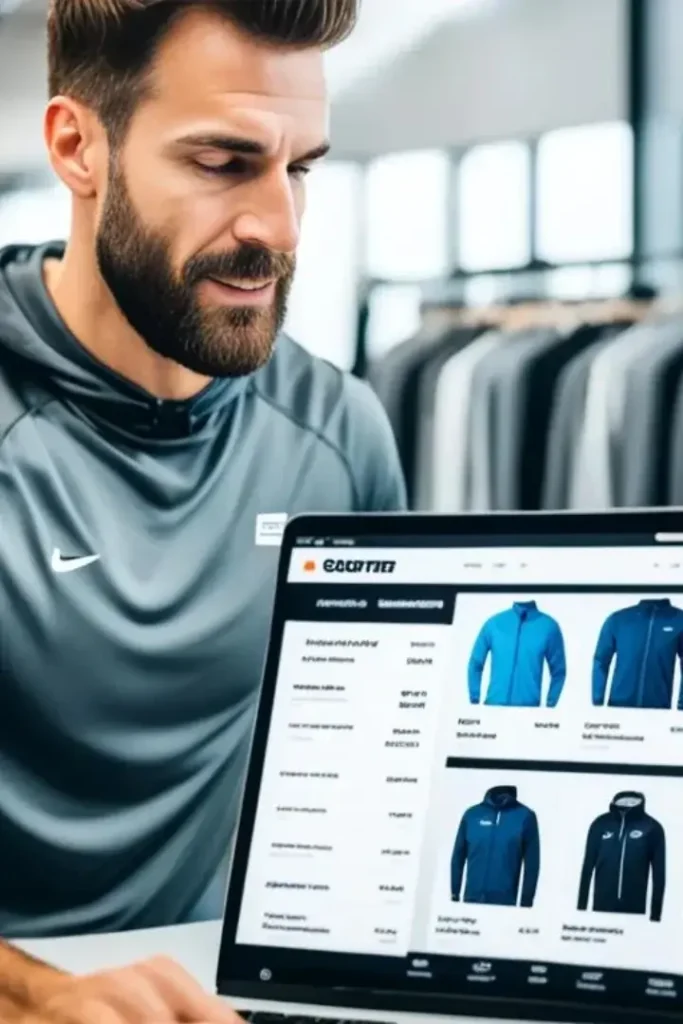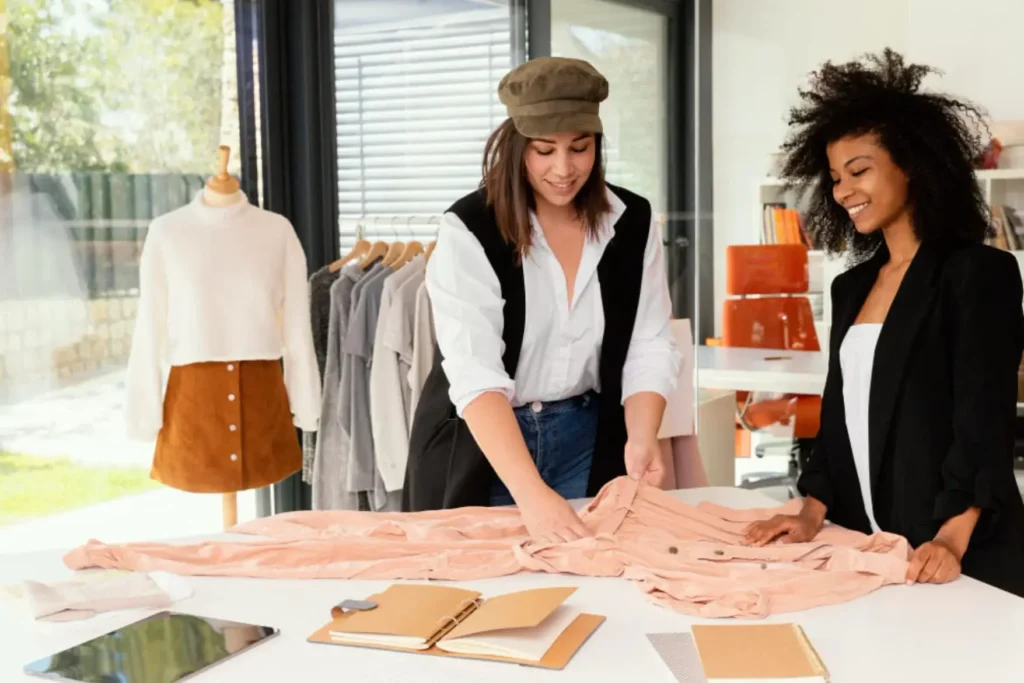Clothing Startups: Selling Online Vs Offline in Pakistan to Grow Sales and Build Trust
Has it ever happened to you to stroll around a crowded market in Lahore or Karachi, passing by shop after shop of fashionable clothes, and yet be a bit amazed that they are still in business, while at the same time it looks like everyone is glued to their phones and shopping on Instagram or Daraz?
Although the appeal of actually feeling the fabric, bargaining face-to-face, and trying the clothes on right there still seems to be strong enough to keep retail alive in Pakistan, an increasing number of people now opt for the convenience of viewing entire collections from the comfort of their homes without having to endure the scorching heat or getting stuck in traffic. This back-and-forth game is creating the ultimate dilemma for new clothing brands: where is it that they really have to put their energy, online or offline?
For startups in the clothing industry, this decision is far from being a matter of preference only; it is a question of their survival, growth, and profitability in the long run in a market that is changing much faster than we expect.
California truth: Pakistan’s fashion industry is flourishing and is valued at nearly $20 billion according to local reports; however, the way to win is no longer the same. Traditional outlets still have some hold in certain areas, but digital platforms are gaining market share at a pace that many retailers were not prepared for. Clothing startups hold the big question now: should they restrict themselves to the safe and walk into physical stores that have been successful for decades, or should they take the risk of going online and enjoying the unpredictable wave of popularity in online sales?
There is no such thing as either-or when it comes to the right answer. An individual’s choice of direction comes with its pros, cons, and even sub-paths, in which a deep comprehension of these concepts is the only way to make the correct decision.
The very topic of Clothing Startups: Selling Online Vs. Offline in Pakistan, however, ceases to be just an area that entrepreneurs have to familiarize themselves with to survive the fashion world’s competition, but rather becomes a real roadmap that they must follow to do so.

Why Clothing Startups in Pakistan Are at a Crossroads
The apparel industry in Pakistan has always been deeply influenced by culture. While choosing what to buy, families like to go shopping together, try on fabrics, and even sip chai. However, within the past ten years, there has been a significant change in customer behavior. With more than 90 million people using the internet and a growing number of tech-savvy young people, online shopping has become a way of life rather than a luxury. According to a State Bank of Pakistan report, e-commerce transactions reached over Rs. 60 billion in just one quarter of 2023.
For clothing startups, this presents both a massive opportunity and a headache. Do you invest in an expensive retail outlet in a commercial hub, or do you pour your savings into creating an online presence with the hope that digital buyers will discover you among hundreds of competitors?
This is the exact dilemma we’re about to solve by comparing Clothing Startups: Selling Online Vs. Offline in Pakistan in detail.
The Offline Route: Tradition, Trust, and Tangibility
Physical retail is not dead in Pakistan; it is still there, but just changing its face. On any Saturday or Sunday, if you go to the Dolmen Mall Karachi or the Packages Mall Lahore, you will find loads of people shopping and carrying their shopping bags full of the latest clothes. Why so? Because offline shopping still has its customers, as it still provides what many Pakistani buyers crave for, i.e., Touch, feel, and instant ownership.
Strengths of Offline Selling
- Trust Factor: There is still a big chunk of Pakistani customers who are not fully convinced about online payment and prefer to buy after seeing the product physically. Just by existing in a location, a brick-and-mortar store gains the confidence of the customers without saying a word.
- Customer Experience: The involvement of sales staff, the alluring décor, and the personalized interaction all act as a catalyst for better purchasing decisions.
- Cultural Preference: The tradition continues to be the main reason why most of the wedding wear and luxury clothing industry is still ruled by offline shopping. People want to feel fabrics and see embroidery details up close.
Challenges of Offline Selling
On the other hand, a few challenges definitely exist in offline selling:
- High Setup Costs: If you compare it to a digital marketing campaign, the rent of a shop in Gulberg Lahore or Tariq Road Karachi will be equivalent to more than an entire year.
- Limited Reach: Your buyers will be those who happen to pass by your store and decide to enter it.
- Scalability Issues: The only way of expanding your business is by opening more outlets, which is quite expensive and time-consuming.
A great amount of funding is used in non-digitally centered startups to make offline selling feel like a more secure option.


The Online Route: Convenience, Cost-Effectiveness, and Growth
On the other hand, the other side of the coin presents altogether a new picture, and this time in favor of online selling. What if we say that as a startup designer, you might not be able to afford a shop in Saddar Karachi, but with just an Instagram page, a Shopify website, or even listings on Daraz, you can be close to your buyers, not only across Pakistan but also overseas, who are always eager to support local brands?
Strengths of Online Selling
- Low Barrier to Entry: The cost of starting up a Facebook Shop or Shopify store is minimal compared to a retail outlet.
- Wider Reach: Your potential customer is anyone from Karachi to Gilgit, provided they have internet access.
- Scalability: You can use digital marketing to expand your business without having to open more stores.
Challenges of Online Selling
However, the online mode is not without its difficulties.
- Trust Issues: A considerable part of customers are afraid of being cheated, of counterfeit materials, or that the delivery may be delayed.
- Logistics and Returns: The processes of deliveries, returns, and exchanges are heavy hitters in your margins.
- Fierce Competition: Besides local stores, you are also competing with thousands of Instagram boutiques that sell similar products.
It’s a breath of fresh air for startups to sell online, but it still requires them to have a very solid digital strategy and customer service.
Clothing Startups: Selling Online Vs. Offline in Pakistan – The Core Comparison
Factor | Offline Selling | Online Selling |
Investment | High (rent, décor, staff) | Low (website, social media, ads) |
Reach | Local, limited to store footfall | Nationwide + global |
Trust | Naturally higher | Needs effort (reviews, COD, branding) |
Customer Experience | Tangible, personalized | Virtual, convenience-based |
Scalability | Difficult & costly | Easier with digital marketing |
Competition | Limited to locality | Intense across platforms |
Flexibility | Rigid, fixed hours | 24/7 availability |


Blending Both: The Hybrid Model
This is where the clever startups take the lead: they don’t choose just one side; rather, they create the hybrid models. Take Khaadi or Generation, for example; they have physical stores all over the place, but their online stores are also doing very well. Even the small boutiques of Faisalabad or Sialkot are now selling on Instagram, and they still have their retail outlet for building customer trust.
By using a hybrid model, startups can have the advantages of both worlds: the reliability of a brick-and-mortar and the potential of online platforms.
Success Stories in Pakistan
- Generation: Initially, they were only offline, but they moved quickly to online platforms, and at present, they are successful in both spaces.
- Kapray: The story of a brand, which was so heavily dependent on the offline mode that it failed to keep up with the digital trends and eventually went down.
- Instagram Boutiques: Thousands of young designers sell exclusively online, some making six figures monthly without owning a shop.
These real examples show that Clothing Startups: Selling Online Vs. Offline in Pakistan is not about choosing one; it’s about knowing your audience and adapting wisely.


Practical Tips for Clothing Startups
- If you’re low on capital → start online, build trust through COD, and invest in branding.
- If you target high-end bridal wear → offline presence is essential; online can only complement.
- If you want to scale quickly, → digital-first strategy wins.
- If you want balance → adopt hybrid: one small outlet + strong online presence.
FAQs on Clothing Startups: Selling Online Vs. Offline in Pakistan
Definitely, if the business is run in a proper way. Online platforms lower costs and increase the number of potential consumers, yet profitability is impacted by marketing, product quality, and delivery reliability.
New businesses frequently find it hard to survive against preexisting brands due to high rent, overhead costs, and limited reach.
It is possible, and a lot of little boutiques do so. However, having a long-term presence requires a website or a marketplace for credibility and scalability.
Offline is a more trust-building channel that naturally makes Pakistan clients trust you more quickly, but continuous online branding and COD might still be able to lessen the distance.
Yes, indeed. Basically, a small pop-up store in your city, along with a powerful online presence, can help you with both getting the trust of your customers and increasing the number of your potential consumers.
Final Word
Ultimately, clothing Startups: Selling Online Vs. Offline in Pakistan is not just a straightforward yes-or-no decision.
Knowing your target audience, budget, and growth plan will help you determine which one is better for you. Offline builds trust, online builds reach, and hybrid models build the future. The fashion industry in Pakistan is vibrant, and the customer-centric startups, whether by providing them with the satisfaction of fabric touching in a store or the convenience of browsing collections online, will be the ones to flourish in this competitive market.
